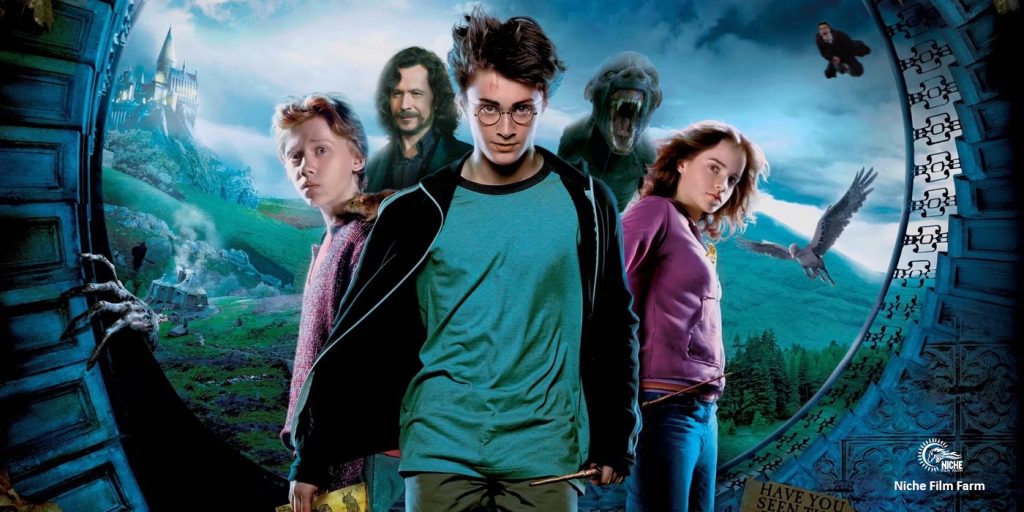A Magical Journey into Darkness and Redemption
Step into the world of wizardry once again with “Harry Potter and the Prisoner of Azkaban,” the third installment in the beloved Harry Potter film series.
In this captivating chapter, directed by Alfonso Cuarón, Harry Potter portrayed by Daniel Radcliffe embarks on a new and darker adventure at Hogwarts School of Witchcraft and Wizardry. This film beautifully balances the magical wonder of the wizarding world with themes of redemption, friendship, and the exploration of one’s past. Join us as we delve into the enchanting tale that has left audiences spellbound for years.
Unveiling Darkness: A Glimpse into the Plot
“Harry Potter and the Prisoner of Azkaban” opens a new chapter in the series, both thematically and stylistically. The film introduces a darker tone as the threat of the infamous prisoner, Sirius Black (Gary Oldman), looms over Harry’s life.
Accused of betraying Harry’s parents to the dark wizard Voldemort, Sirius Black’s escape from the wizarding prison Azkaban sets the stage for a riveting story of mystery and redemption. As Harry and his friends Ron (Rupert Grint) and Hermione (Emma Watson) uncover the truth behind Sirius’s actions, they unravel a web of secrets that ultimately reshape their understanding of the past.
Director’s Vision: Alfonso Cuarón’s Unique Touch
Under the visionary direction of Alfonso Cuarón, the film takes a stylistic departure from its predecessors. Cuarón brings a darker and more atmospheric approach to the series, infusing it with a sense of realism and emotional depth.
His use of muted color palettes and inventive camera work transports viewers into the heart of the wizarding world, evoking a sense of both magic and vulnerability. This fresh perspective breathes new life into the franchise, resonating particularly well with audiences who appreciate a more nuanced exploration of the characters’ inner struggles.
Dynamic Performances: The Magic of the Cast
The cast’s performances continue to shine brightly in “Prisoner of Azkaban.” Daniel Radcliffe evolves as Harry Potter, reflecting the character’s growth and emotional turmoil. Rupert Grint and Emma Watson deepen their portrayals of Ron and Hermione, capturing the complexities of friendship and teenagehood.
Gary Oldman’s portrayal of Sirius Black is hauntingly captivating, while David Thewlis’s portrayal of Professor Remus Lupin adds depth and empathy to the narrative. The ensemble cast’s chemistry and commitment breathe life into their roles, making the film’s emotional moments all the more resonant.
Visual Enchantment: A World of Magic Redefined
Alfonso Cuarón’s artistic sensibilities extend to the film’s visual design, bringing a fresh perspective to the wizarding world. The familiar landscapes of Hogwarts and the surrounding areas take on a new level of detail and richness, enhancing the immersion.
The magical creatures, including the majestic Hippogriffs and eerie Dementors, are brought to life with a blend of practical effects and CGI, making them feel astonishingly real. The Quidditch matches are more exhilarating than ever, with sweeping shots that capture the thrill of the sport.
Conclusion: A Cinematic Triumph of Magic and Growth
“Harry Potter and the Prisoner of Azkaban” stands as a cinematic triumph, seamlessly blending magical spectacle with profound character development. Under Alfonso Cuarón‘s direction, the film explores themes of darkness, redemption, and the power of human connections.
As Harry navigates the treacherous waters of his past and confronts his own fears, audiences are treated to a captivating tale that transcends its fantasy roots. With stunning visuals, dynamic performances, and an intricate narrative, this installment continues to enchant and captivate fans old and new.

